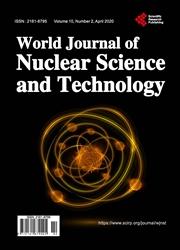Simulating the Production of Medical Radioisotopes in a Fast Thorium-Cycle ADS with SERPENT
引用次数: 0
Abstract
Radiopharmaceuticals are used in nuclear medicine for diagnostic or therapeutic acts. The short decay half-lives of medical radioisotopes, especially those used for diagnostics, imply that they should be produced continuously and transported as quickly as possible to the medical units where they are used. Neutron-rich medical radioisotopes are generally produced in research reactors, like technetium-99m, lutetium-177, holmium-166 and iodine-131. On the other hand, proton-rich radioisotopes are produced via reactions with charged particles from accelerators like fluorine-18, gallium-67, iodine-123 and thallium-201. Beside this, innovative nuclear reactors are advocated as solutions to the issues of nuclear waste production and proliferation threats. Fast neutron, thorium-cycle and accelerator-driven subcritical (ADS) reactors are some of the most promising of them, proposed as safer fuel breeders and “waste burners”. This article examines the use of a fast thorium-cycle ADS with liquid lead-bismuth eutectic coolant for the production of molybdenum-99/technetium-99m and lutetium-177. Burnup simulation has been made with the Monte-Carlo (MC) code SERPENT. It is demonstrated that MC codes can advantageously be used to determine the optimal irradiation time for a given radioisotope in a realistic reactor core. It is also shown that fast thorium-cycle ADS is an economical option for the production of medical radioisotopes.用SERPENT模拟医用放射性同位素在快速钍循环ADS中的生产
放射性药物在核医学中用于诊断或治疗作用。医用放射性同位素,特别是用于诊断的放射性同位素,衰变半衰期短,这意味着它们应该持续生产,并尽快运输到使用它们的医疗单位。富含中子的医用放射性同位素通常在研究反应堆中生产,如锝-99m、镥-177、钬-166和碘-131。另一方面,富含质子的放射性同位素是通过与来自加速器的带电粒子反应产生的,如氟-18、镓-67、碘-123和铊-201。除此之外,创新的核反应堆被提倡作为解决核废料生产和核扩散威胁问题的办法。快中子、钍循环和加速器驱动的亚临界(ADS)反应堆是其中一些最有前途的反应堆,被认为是更安全的燃料培育器和“废物燃烧器”。本文研究了快速钍循环ADS与液态铅铋共晶冷却剂在生产钼-99/锝-99m和镥-177中的应用。用蒙特卡罗程序SERPENT进行了燃耗模拟。结果表明,MC代码可以有利地用于确定实际堆芯中给定放射性同位素的最佳辐照时间。还表明,快速钍循环ADS是生产医用放射性同位素的经济选择。
本文章由计算机程序翻译,如有差异,请以英文原文为准。
求助全文
约1分钟内获得全文
求助全文

 求助内容:
求助内容: 应助结果提醒方式:
应助结果提醒方式:


